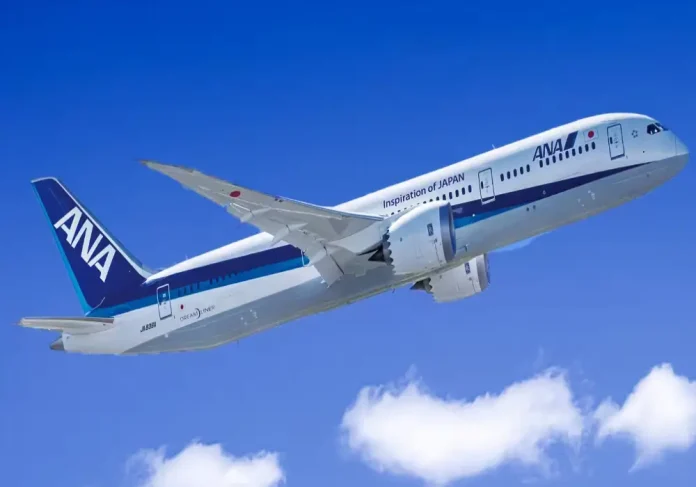Tokyo: In a bizarre and alarming incident, an All Nippon Airways (ANA) flight bound for the United States was compelled to return to Tokyo after a disruptive passenger, reportedly a 55-year-old American man heavily intoxicated, bit a cabin attendant mid-flight. The incident, which took place over the Pacific, left the crew member with a mild injury.
The ANA spokesperson informed AFP that the unruly passenger sank his teeth into the attendant’s arm, prompting the pilots to make the decision to turn the aircraft around. The plane, carrying 159 passengers, headed back to Haneda airport, where the disruptive individual was handed over to local authorities.
The passenger, now in police custody, reportedly claimed not to recall his behavior during questioning. The incident adds to a concerning series of aviation mishaps in Japan over a short period.
This incident follows a near-catastrophic collision at Haneda on January 2, where a Japan Airlines aircraft narrowly avoided disaster after colliding with a smaller Coast Guard plane. Fortunately, all 379 people on board the JAL Airbus escaped before the aircraft caught fire, though five individuals on the smaller plane, engaged in earthquake relief operations, lost their lives.
Tuesday saw another aviation scare when the wing tip of a Korean Air airliner struck an empty Cathay Pacific plane while taxiing at an airport in Hokkaido. Despite the mishap, no injuries were reported, and Korean Air attributed the incident to a third-party ground handler vehicle slipping on heavy snow.
Similar non-injury incidents occurred on Sunday at a Chicago airport when an ANA aircraft made contact with a Delta Air Lines plane. Meanwhile, on Saturday, another ANA flight had to turn back due to a crack discovered on the cockpit window of the Boeing 737-800.
Aviation experts speculate that these incidents could be attributed to the challenge of handling larger planes at airports not originally designed for them. Doug Drury, an aviation expert at Central Queensland University, suggested that the cracked window incident might be related to a faulty window heat system, a not uncommon issue at high altitudes with extreme temperatures.
The recent string of events has raised concerns about aviation safety and the need for enhanced measures to prevent such incidents in the future.
Japan plane turns back after man bites cabin attendant



